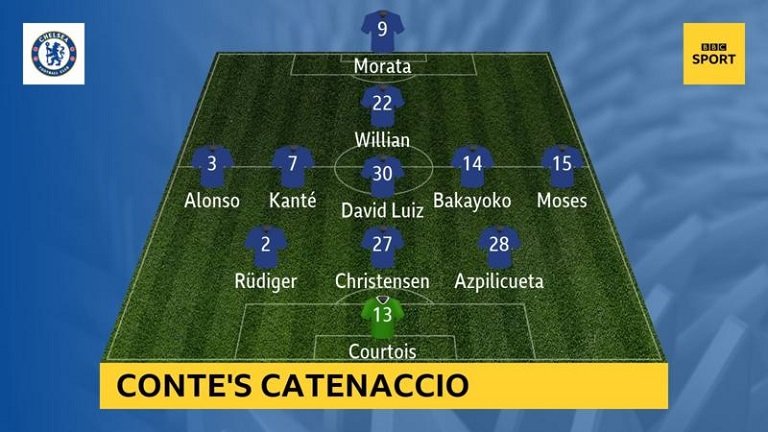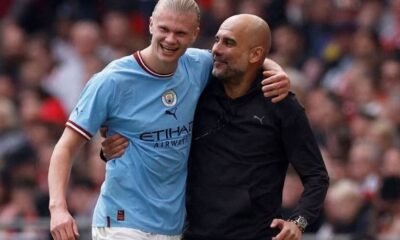English Football
How Chelsea’s catenaccio tactics beat Tottenham – Rudd Gullit


Marcos Alonso and Pedro celebrate Chelsea’s 88th minute winner against Tottenham at Wembley Stadium
The Chelsea that I saw earn a dramatic 2-1 victory against Tottenham at Wembley was not the Chelsea that I usually see, and not the Chelsea that I saw so often on their way to winning the title last season.
This was a Chelsea that employed a ‘catenaccio’ tactical system – a counter-attacking style which became popular in Italian football where teams dig deep, hope for one or two chances to score, take them and then close the game down again.
It worked perfectly against Tottenham as Marcos Alonso converted both of their shots on target.
Chelsea’s Italian manager Antonio Conte was forced into playing catenaccio because of the Blues’ problems with personnel.
Their title win last season was spearheaded by the attacking trio of Diego Costa, Eden Hazard and Pedro – but with Costa’s situation still unresolved, Hazard out injured and Pedro only fit enough for the bench, Conte had to do something different.
I’m not sure this is a tactic Chelsea will employ regularly over the rest of the season.
But they just didn’t have the personnel to play in a more attacking way against Spurs, so they said they would do it this way and ended up getting the result they wanted against the team who were their nearest challengers last season.
Moving Luiz into a three-man midfield paid off

David Luiz played in a three man midfield dubbed Antonio Conte’s Catenaccio
You could see from the moment the Chelsea team was announced what Conte was trying to do.
He decided to play 3-5-2 with Alvaro Morata up top and Willian just behind, as opposed to the 3-4-3 formation they usually play, and he used centre-back David Luiz as a holding midfielder.
N’Golo Kante and Tiemoue Bakayoko – who was making his debut after signing from Monaco this summer – were in alongside him, meaning they were playing with three defensively minded players in central midfield.
READ: Chelsea demanding ‘impossible’ fee from Atletico – Diego Costa
Every time Tottenham’s Dele Alli tried to go into those areas in the hole just behind striker Harry Kane, Luiz was almost always there. And if he wasn’t, then Kante was there. Or Bakayoko was there.
Chelsea changed to a three to keep the middle solid and not let anything through there. Alli did nothing and Christian Eriksen also had a difficult time because there were too many bodies to get through.
That forced Tottenham out wide and Chelsea defended well from all the crosses.
Spurs produced 23 of them from open play, but only two were successful in finding a home shirt. That’s because Chelsea had enough bodies to cope and head them away because of their organisation and discipline – which all came from the way Conte set his team up.

Catenaccio: Luiz, Bakayoko and Kante kept a tight midfield three throughout the game
Spurs didn’t have the patience or guile to break them down
When I played in AC Milan’s dominant team of the late 1980s and early 1990s, most opponents played like that against us because we were a successful side who had lots of attacking talent.
It is difficult because you can’t get through and they just wait for you. You need to be patient.
Spurs had difficulty in finding holes. They had one moment in the first half when Harry Kane hit the post but for the rest there was not much danger for Chelsea.
Tottenham needed luck and they got it when the goal finally came through Michy Batshuayi’s own goal.
Spurs had 68% possession over the 90 minutes but they still couldn’t create a lot. They couldn’t find a solution to get through Chelsea.
So how should they have done it? You have to open them up by stretching them by making runs.
If Kane makes runs behind the Chelsea wing-backs then they go back and the Spurs full-backs are free. If you make runs you have a chance of breaking them down.
Ruud Gullit was speaking to BBC Sport‘s Jonathan Jurejko













